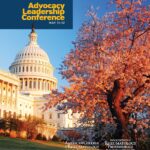A New Normal
How do we move toward a new normal? Not surprisingly, it starts with the committees that organize our conferences. Having women serve as colloquium chairs increases the selection of women as speakers by approximately 60%.5
Another way to have more women speak at our conferences is to ask more women to speak. Earlier this year, PLoS Biology featured an article on a database of women scientists created by Elizabeth McCullagh, PhD, who is a post-doctoral fellow in the Department of Physiology and Biophysics at the University of Colorado.6 The database comprises women scientists who have a priori agreed to get more involved—to speak to the press about something in their area of expertise, to consult on a project, to sit on a committee or to speak on a panel. The database now includes more than 7,500 women from 133 countries and has been accessed more than 100,000 times.7
The creators of the database note, “Our goal is to increase representation of women scientists in society and change [the] perception of what a scientist looks like. As our database grows, we plan to make it easier to use so women scientists are recognized for their significant contributions to science and our understanding of the world.”8
A satellite organization called 500 Women in Medicine was established by five medical students to expand the database to include women physicians. They note, “In order for women physicians to reach leadership roles, they must be visible, and they must be seen as experts in the public sphere.”9
The database was created specifically to address the most common explanation for why more women are not asked to speak at conferences—no one could think of a woman to ask.
Another way to prevent manels is for speakers to refuse to join them. In June 2019, National Institutes of Health Director Francis S. Collins, MD, PhD, announced he would no longer agree to participate in conferences that did not include women and members of other groups under-represented in science. In his announcement, he wrote, “It is not enough to give lip service to equality; leaders must demonstrate their commitment through their actions. Toward that end, I want to send a clear message of concern: it is time to end the tradition in science of all-male speaking panels.”10
Let me do my part. I am personally flattered every time I am asked to give a talk on systemic vasculitis. That said, if I am being honest, most of my talks could be delivered equally well by:


